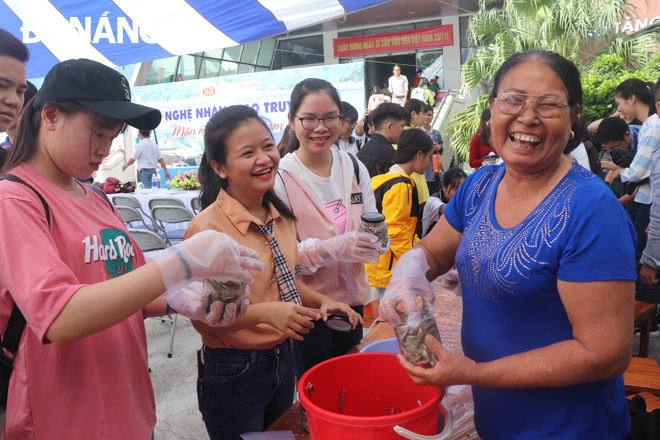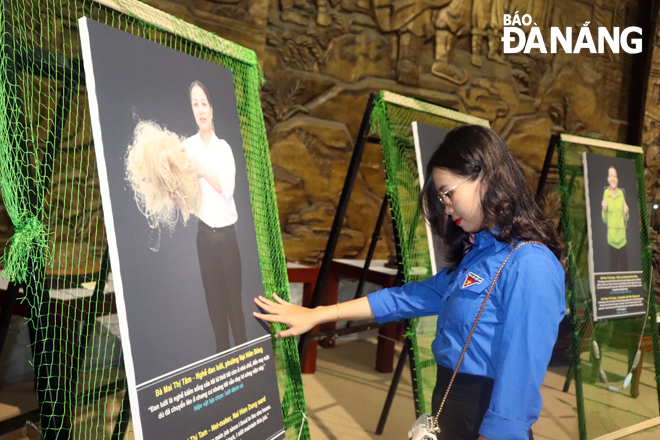The city's museum promotes community-oriented activities
The promotion of community-oriented activities has been popular at museums based in the western countries, but this model is still quite new in Viet Nam. It is encouraging sign that, in recent times, the Museum of Da Nang has gradually promoted community-oriented activities which have captured much attention from the general public.
 |
| An artisan from the Nam O fish sauce making village is seen enjoying fun moments whilst instructing local students how to make fish sauce. |
A collaborative exhibition, the ‘Tales from the River Bank’, took place at the Museum of Da Nang last month, showcasing photos and telling stories of a fishing community which once lived in temporary ‘nha cho’ (stilt houses) along the eastern bank of the Han River, in Nai Hien Dong Ward, Son Tra District.
On display at the event were a number of photos of these residents holding objects they have selected from the museum’s collection, such as oil lamps, fishing nets and firewood stoves and telling stories of their memorable lives in the past. These stories document the resilience of a community, their connection to the river and the changing livelihoods.
The exhibition was part of the research project on fishing heritage and livelihoods in Da Nang which was conduced by professor Graeme Were, the chair and professor of Anthropology in the Department of Anthropology and Archaeology at the UK-based University of Bristol. The museum is one of the 3 partners of this project.
 |
| Thanks to the ‘Tales from the River Bank’ exhibition, young people gained a deeper insight into the lives of fishermen who lived in temporary ‘nha cho’ in the past through displayed exhibits. |
The exhibition was funded by Knowledge in Action for Urban equality (University College London).
Between 2000 and 2005, families who lived in stilt houses along the eastern bank of the Han River to modern apartments in Son Tra District-located Nai Hien Dong quarter. This marked a significant stage in the development of the city, transforming Da Nang into what is now one of Asia’s fastest growing cities.
Traditional livelihoods like fishing are under threat all over the world. Urban development, sometimes unregulated, has a huge impact on local residents’ lives. This exhibition reveals the resilience of a community when faced with the challenge of relocation and change.
Ms Phan Thi Cuong, a resident of Nai Hien Dong Ward, Son Tra District, was moved at seeing these photos on display at the exhibition.
Fishing tools remind her of her time living in a stilt house in the past when everything in her family’s life revolved around the river. Nowadays, since moving to land, many things have changed, including her job.
Graeme Were said the exhibition was the first collaboration between the museum and the University. “It was told stories from fishing families who had lived in ‘nha cho’ on the eastern bank of the Han River, and they witnessed rapid urbanisation in the city when high-rises have been booming in Da Nang,” said Graeme Were.
“We had 4 weeks to hear old stories and memories from the fishing community, and the changes of livelihood and changing face of the city. And the exhibition resulted from the fishing heritage and livelihood in the Da Nang project.” added Graeme Were.
Mr Huynh Dinh Quoc Thien, the museum’s Director, affirmed that the ‘Tales from the River Bank’ exhibition attracted a great deal of attention from the public. The happy faces of the fishermen visiting the exhibition, indeed, reflected the great effectiveness the community-oriented approach proves.
“The message of connecting the museum with the community through artifacts, and integrating the voice of the community into the display is what makes this exhibition really new, attractive, and rich in human values ”, remarked Thien.
By NGOC HA – Translated by ANH THU







